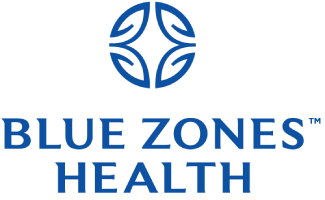When you hear the word “cholesterol,” what comes to mind? If you’re like many people, this word may conjure up negative emotions because it always seems to be a topic of discussion during doctor’s visits. But have no fear! Today we will explore what cholesterol is, as well as some lifestyle changes that can make a big difference in your levels.
What is Cholesterol?
First, let’s define what cholesterol is, as this will help to lay the foundation. Cholesterol is a waxy, fat-like substance that is found in the cells of our body. Here are 3 important facts for you to keep in mind:
- Cholesterol is a crucial component of our bodies, as it is used to make things like hormones, vitamin D, and bile acids.
- Our body makes all the cholesterol it needs. We essentially have our own in-house manufacturing system.
- Therefore, we don’t need to eat foods containing cholesterol because we have already produced all that we need.
With these facts in mind, let’s define what exactly it means to talk with your doctor about cholesterol levels. When a provider refers to “cholesterol,” they are actually referring to the protein carriers that help to move the substance around to different parts of the body. Think of this like a shuttle transportation system. This is where “good” and “bad” cholesterol come into play. Let’s break this down further.
“Good” versus “Bad” Cholesterol
LDL cholesterol, or what is often referred to as the “bad” cholesterol, is the carrier that takes cholesterol from our liver and out to the tissues where it can be deposited as atherosclerosis, which is the buildup of plaque in the arteries that can lead to heart disease. When we discuss LDL levels being too high, this really means that there is a lot of cholesterol that is being transported to areas of the body where it doesn’t belong. HDL , or what is referred to as the “good cholesterol” is a carrier that picks up deposits from our tissues and returns them to the liver where they can then be packaged to be disposed of. When we talk about HDL levels being too low, this means that the clean-up crew is not functioning as well as it should.
The key here is that we want LDL levels to be low because this means there won’t be as much circulating to our tissues and blood vessels, and we want HDL to be high because that means that there are lots of molecules on clean-up duty bringing cholesterol back to the liver.
How to Lower Cholesterol with Lifestyle Changes
So what are some ways that we can improve our levels through lifestyle changes? There are three different areas that we can focus on to make some changes. The first is through diet, and there are specific foods like fiber and saturated fat that we will expand on later. The second is through physical activity. Getting about 40 minutes of moderate-intensity exercise 3 to 4 times per week has been shown to both decrease LDL and increase HDL levels. Here are some examples of moderate-intensity exercise from the American Heart Association. The third area is hopefully a byproduct of diet and exercise: weight loss. Losing 10 pounds has been shown to significantly improve cholesterol levels.
Focus on Food
Let’s talk more about food. There are three areas of food that play major roles when it comes to managing cholesterol:
- The first is to increase the amount of fiber that you eat. Soluble fiber helps to prevent the absorption of cholesterol. For more information on fiber, check out our article and video.
- Next is to increase your intake of phytosterols. These are the plant versions of cholesterol and because of this, they compete with cholesterol to be absorbed in our body. Food sources of phytosterols include nuts, seeds and whole grains.
- Lastly, decrease intake of saturated fat. This has one of the biggest influences on high LDL levels. Saturated fat prevents certain enzymes from working to clear out cholesterol. Saturated fat is found mainly in animal products, but certain plants such as coconut or plant oils also contain saturated fat and should be avoided or used sparingly.
For even more ideas on foods that can help reduce cholesterol, check out this article from Harvard.
Game Changers
Here are some ways to help you incorporate the information we just learned into your everyday life:
- Aim to consume 40 grams of fiber per day from a variety of sources such as beans, whole grains, nuts, seeds, fruits and vegetables.
- Eat one serving of both nuts and seeds per day. This will help you to get more phytosterols in your diet.
- Limit animal products. Because animal products usually contain saturated fat, this can really help to decrease LDL levels. Try to eliminate them altogether or use them sparingly.
- Exercise 3-4 times per week for about 40 minutes each time. This will help to reduce LDL levels and raise HDL levels. Find activities that you enjoy doing, or exercise outside in the fresh air.
As you can see, there are many different ways that lifestyle changes can help to improve your cholesterol levels. There are a few different ways to approach this: by going all in and working on all 4 areas of the Game Changers, or, working on each one until it becomes a habit. If you would like more information on managing cholesterol through changes to your lifestyle, or finding an approach that works for you, schedule an appointment with us today!
